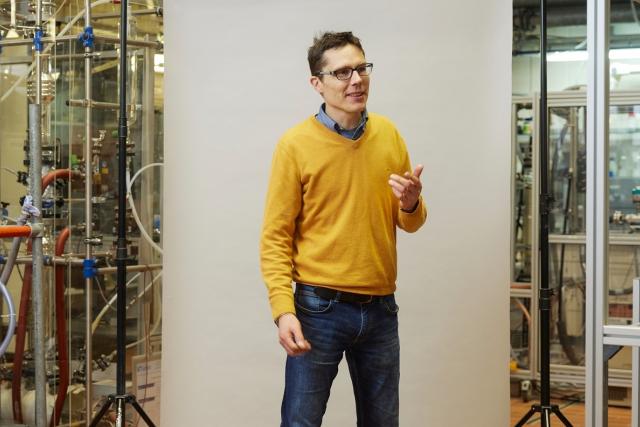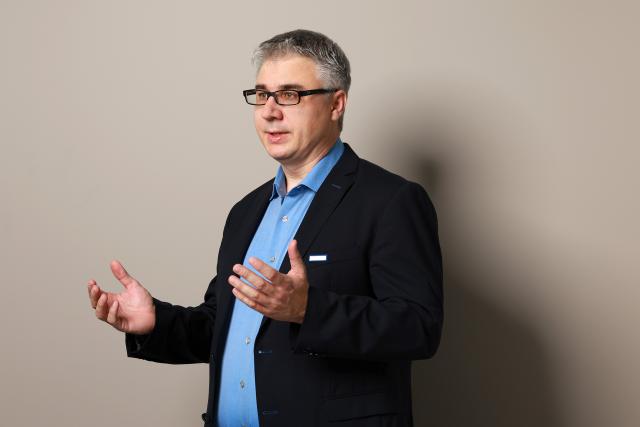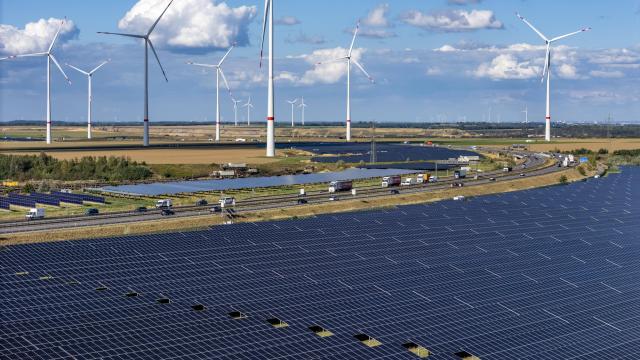

Smart batch processes for electricity price-oriented production
Never change a running system? For most companies, this no longer applies. Industry is facing a major challenge: its CO₂ emissions must be drastically reduced while remaining competitive – and this at a time when energy costs have risen sharply. The energy-hungry chemical industry alone consumes around 50 terawatt hours of electrical energy per year. This corresponds to ten percent of Germany's total electricity consumption. And because the move away from fossil fuels means that electrification is on the rise, many companies – including small and medium-sized ones – will consume significantly more electricity in the future. Well-established production routines are now facing increasingly volatile energy prices. After all, electricity generation is relying more and more on wind and solar – sources that aren’t available consistently throughout the day. Production based on rigid schedules runs the risk of running at full capacity when electricity is most expensive, instead of taking advantage of low-price periods.
Production steps with varying energy demand
Erik von Harbou shows how companies can make their processes more flexible. The professor of process engineering is the spokesperson for the project "Smart batch processes in the energy system of the future". Batch processes are production processes in which individual work steps must be carried out one after the other and precisely coordinated. Examples include mixing, heating, fermenting, reacting and filtering. Such processes are found in food production, in the chemical and biotechnology industries, and in the pharmaceutical sector, for example in the production of active pharmaceutical ingredients. "A batch process can be thought of as baking a cake according to a recipe: first you mix the batter, then you bake it, then you let it cool," explains von Harbou. "It's similar in industry, only on a larger scale. Each of these steps consumes different amounts of electricity, sometimes little, sometimes a lot."
Science provides clarity
Until now, shift schedules, plant availability and the order situation have usually determined when and how production takes place. Whether electricity is cheap or expensive at any given time is not a priority. The range of possible influencing factors extends from chemical and technical processes to personnel planning and logistics to quality requirements, delivery deadlines, customer requirements and certification specifications. "Of course, we can't calculate everything that affects electricity consumption," says von Harbou. "But as a university research project, our strength lies in our ability to identify the most important structures in this jungle of possible parameters by bringing together experts from different disciplines: process engineering, electrical engineering, chemistry and economics."
"Sometimes, a process simply depends on when the truck carrying the required materials arrives at the factory, " explains Florian Sahling, chair of production management, who brings a business management perspective to the project. “Many processes have been perfected over years and can't just be changed overnight without compromising product quality,” he emphasizes.
Price predictions using algorithms
Among other things, the team has built several so-called demonstrators. These are research facilities that simulate various processes as they might occur in practice. Here, von Harbou and his colleagues are testing, for example, what happens when the energy supply fluctuates during an ongoing fermentation process – and how the end product can still be produced successfully, for example with the help of enzymes, bacteria or yeasts that are resistant to temperature fluctuations.
The team is also developing technical solutions for temporarily storing energy and decoupling individual process phases from one another: batteries, heat storage systems that store heat for later process steps, and fluidic storage systems that act as buffers for liquid or gaseous substances. The researchers are also considering how digital production planning systems could take dynamic electricity prices into account. This could be achieved, for example, through algorithms for automated price forecasts that use practical planning tools to reconcile electricity prices with plant availability and recipes.
Researchers are collaborating with companies
"It is important for us to receive input from people in companies who tell us: 'This works, this doesn't work, you need to look at this.'" The scientists exchange ideas with representatives from various industries. An industrial advisory board comprising companies from the region is an integral part of the project. Some companies take the researchers' suggestions on board, while others share experiences from their own projects. Employees at a foundry, for example, reported how they reorganised their shift system to avoid electricity price peaks.
The big surprise: the changeover was far less complicated than feared. "And at a lubricant manufacturer, for example, it would have been theoretically conceivable to slightly change the recipe to make processes more flexible. The problem: customers only accept the existing formula. However, on closer inspection, it became apparent that there was another option: the capacity of the boiler – sometimes half full, sometimes completely full – could be adjusted relatively easily, which also enabled more flexible working." A provider of smart grid solutions is supporting the research team with practical experience in how energy flows can be intelligently controlled.
"This exchange between science and practice provides a realistic picture of what can work. And it shows that relatively simple steps can already have a big impact, especially in smaller companies," says von Harbou. "In large companies, the decision-making chain is long – it can sometimes take years before something is tested. A small business can sometimes simply try out a change in the next production run. At the same time, small businesses benefit particularly from more flexible processes. This is because the resources for investing in new technologies or extensive conversions to save energy are usually limited."
Traffic light system to provide guidance
The insights and methods gained will be incorporated into a simple orientation system, "a kind of map or traffic light system that shows at a glance how easily a process can be made more flexible. Green means: easy. Yellow: possible with adjustments. Red: difficult. In other words, practical assistance that helps companies better classify their own production systems and identify realistic scope for improvement," says von Harbou.
Rethinking the cycle
"Science offers solutions for electricity price-oriented production. However, companies should be prepared to question familiar processes," emphasises the process engineering expert. "Many processes have been following rigid cycles for decades – often because that's how it's always been done. And there are basic beliefs such as 'If you're not using your machines to full capacity, you're doing something wrong´. Our project shows that those who dare to question habits can in many cases save energy, reduce costs and still maintain quality."


Want to learn more about this topic?
Then browse through the following scientific publications and magazine articles:
Harbou E von, Ryll O, Schrabback M, Bortz M, Hasse H (2017) Reactive Distillation in a Dividing-Wall Column: Model Development, Simulation, and Error Analysis. CIT 89:1315-1324.
>> READ ARTICLE
Breit F, Zipp C, Weibel C, Harbou E von (2025) A quantitative evaluation of the prediction performance of a one-dimensional multifluid population balance model in continuous and semi-batch bubble columns. Chem Eng Res Des.
>> GO TO PAPER
Christian, J.; Sahling, F. (2024)
Carbon reduction in global supply network design subject to carbon tariffs and location-specific carbon policies, in: Sustainable Manufacturing and Service Economics (3), 100028.
>> VIEW ARTICLE
Sahling, F. (2016):
Integration of vendor selection into production and remanufacturing planning subject to emission constraints, in: International Journal of Production Research (54), S. 3822-3836.
>> GO TO PAPER
Smarte Batchprozesse im Energiesystem der Zukunft: Zukunftsfähige Produktion: Smart und nachhaltig
D Görges, E von Harbou, M Kiehl, F Sahling, K Spraul - Ökologisches Wirtschaften, 2025
>> ACCESS ARTICLE

Diese Themen könnten dich auch interessieren:



